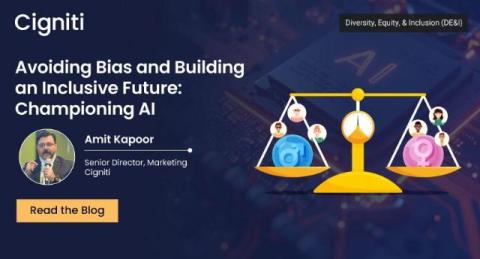Systems | Development | Analytics | API | Testing
AI
Episode 03: Future of Artificial Intelligence- How AI Will Affect Businesses in 2024 and Beyond.
Pioneering the Future: Generative AI's Impact on Medical Devices
Introducing Ballerina AI Data Mapper
How to use Fivetran and Snowflake to move data and innovate
16 Ways Insurance Companies Can Use Data and AI
Avoiding Bias and Building an Inclusive Future: Championing AI
Commercial vs. Self-Hosted LLMs: A Cost Analysis & How to Choose the Right Ones for You
Automated Packaging Solutions: Revolutionizing Modern Industries
What are Automated Packaging Solutions?
Automated packaging solutions refer to systems and technologies designed to handle various packaging tasks with minimal human intervention. These solutions encompass a range of activities, including filling, sealing, labeling, and palletizing products. By integrating robotics, artificial intelligence (AI), and the Internet of Things (IoT), automated packaging systems can perform repetitive tasks with precision and speed, significantly reducing the need for manual labor.
Benefits
The adoption of automated packaging solutions offers numerous advantages across different industries:
- Increased Efficiency: Automated systems can operate continuously, handling large volumes of products without the need for breaks, thereby boosting overall productivity.
- Cost Savings: By reducing labor costs and minimizing errors, businesses can achieve significant cost savings. Automated systems also optimize material usage, reducing waste.
- Improved Accuracy: Precision is a hallmark of automated packaging. These systems ensure consistent quality and reduce the likelihood of defects, enhancing product reliability.
- Enhanced Safety: Automation reduces the need for human workers to perform hazardous tasks, leading to a safer working environment.
- Scalability: Automated packaging solutions can be easily scaled to accommodate increasing production demands, making them ideal for growing businesses.
How It Works
Automated packaging systems operate through a combination of advanced technologies and processes:
- Robotics: Robots are employed to perform repetitive tasks such as picking and placing products, filling containers, and sealing packages. They offer high speed and precision, handling delicate items with care.
- Artificial Intelligence (AI): AI algorithms optimize the packaging process by analyzing data and making real-time adjustments. AI can predict maintenance needs, enhance system performance, and improve decision-making.
- Internet of Things (IoT): IoT devices connect various components of the packaging system, enabling seamless communication and coordination. Sensors and smart devices monitor equipment status, track inventory, and ensure optimal operation.
- Software Integration: Centralized software platforms manage and control the entire packaging process, integrating with other systems such as Enterprise Resource Planning (ERP) and Warehouse Management Systems (WMS) to ensure smooth operations.
Examples of Implementation
Numerous businesses across different sectors have successfully implemented automated packaging solutions:
- Food and Beverage Industry: A leading beverage manufacturer implemented robotic systems to handle the packaging of bottled drinks. The automation resulted in a 30% increase in production efficiency and a significant reduction in labor costs.
- Pharmaceuticals: A pharmaceutical company adopted AI-driven packaging systems to ensure precise dosage and labeling of medications. This automation enhanced product safety and compliance with regulatory standards.
- E-commerce: An e-commerce giant integrated IoT-enabled packaging solutions to manage its vast inventory and streamline order fulfillment. The system's real-time tracking capabilities improved delivery accuracy and customer satisfaction.
Conclusion
Automated packaging solutions are transforming the landscape of modern manufacturing and logistics. By leveraging cutting-edge technologies, businesses can achieve unprecedented levels of efficiency, accuracy, and cost savings. Despite challenges such as initial setup costs and technical complexities, the long-term benefits make automation a worthwhile investment. As industries continue to evolve, embracing automated packaging solutions will be crucial for staying competitive and meeting the demands of a rapidly changing market.











